
Sushi is a cornerstone of Japanese cuisine, beloved worldwide for its simplicity, freshness, and rich flavors and textures.
From delicate Nigiri to flavorful Maki rolls, sushi offers something for everyone.
Whether you’re a sushi enthusiast or trying it for the first time, understanding the different types of sushi can help you appreciate this culinary art form even more.
This guide will explore 13 popular sushi types, each offering a unique taste experience.
Popular Sushi Types You Must Try
1. Nigiri

Nigiri is one of the most traditional forms of sushi.
It consists of a small mound of vinegared rice topped with a slice of raw or cooked fish, seafood, or other ingredients.
The fish is usually draped over the rice and sometimes garnished with a small dab of wasabi.
Nigiri is often enjoyed with soy sauce for dipping.
- Main Ingredients: Vinegared rice and a topping, typically raw fish.
- Best For: Traditional sushi lovers.
- Why It’s Great: Simple yet flavorful, Nigiri highlights the freshness of the fish.
2. Sashimi

Sashimi is not technically sushi, as it doesn’t include rice, but it’s still a popular dish in sushi restaurants.
It consists of thin slices of raw fish or seafood with soy sauce and wasabi.
The focus is entirely on the quality and taste of the fish, making it a favorite for purists.
- Main Ingredients: Thin slices of raw fish or seafood.
- Best For: Purists who love raw fish.
- Why It’s Great: Pure and simple, sashimi lets you enjoy the unadulterated taste of the fish.
3. Maki
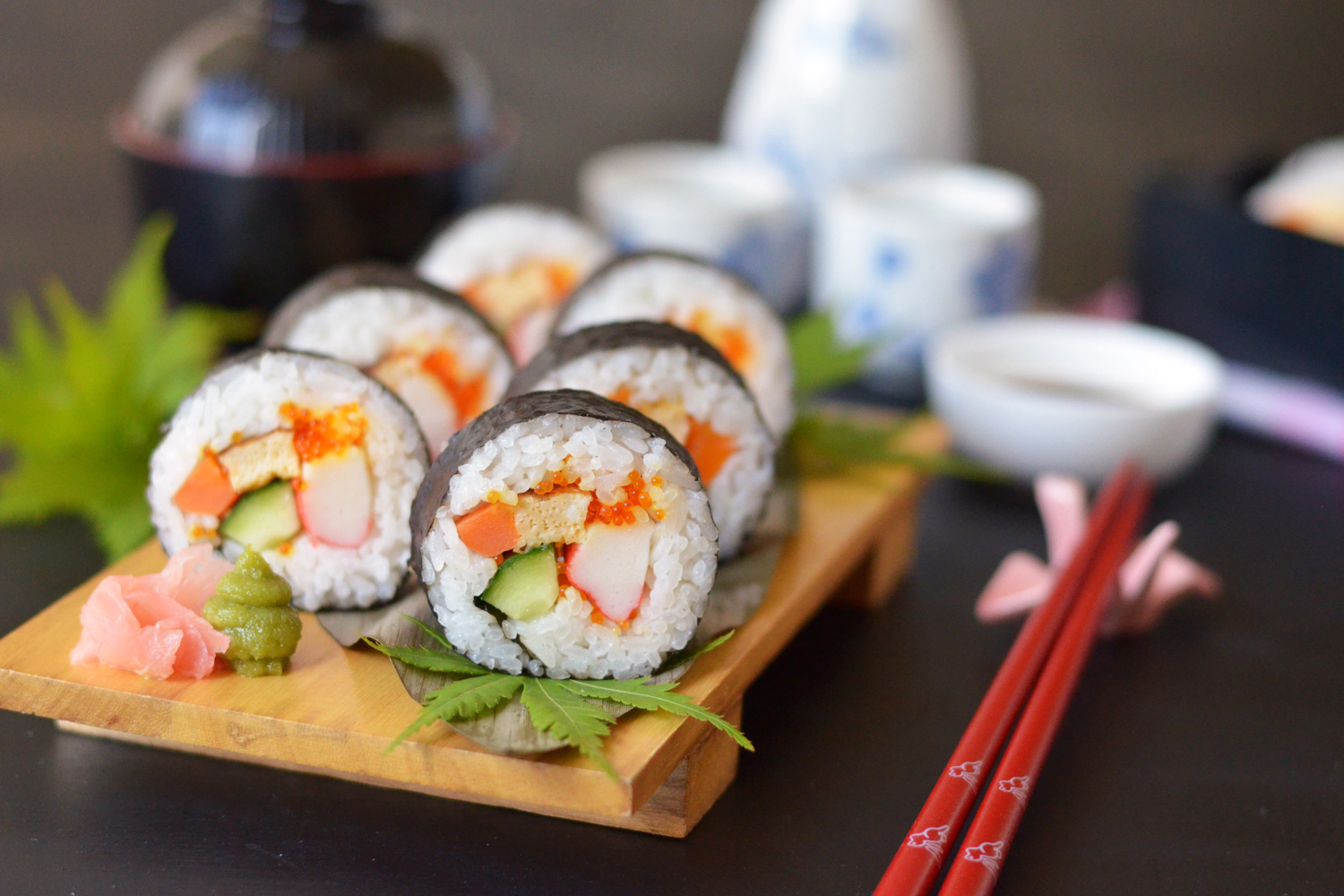
Maki sushi, also known as Makizushi, is a rolled sushi made with vinegared rice, fish, and vegetables wrapped in a sheet of nori (seaweed).
It’s typically sliced into bite-sized pieces and comes in various styles and fillings.
Maki rolls can range from simple cucumber rolls to more elaborate combinations.
- Main Ingredients: Rice, nori, fish, or vegetables.
- Best For: Fans of sushi rolls.
- Why It’s Great: Versatile and easy to eat, Maki offers endless combinations of ingredients.
4. Uramaki
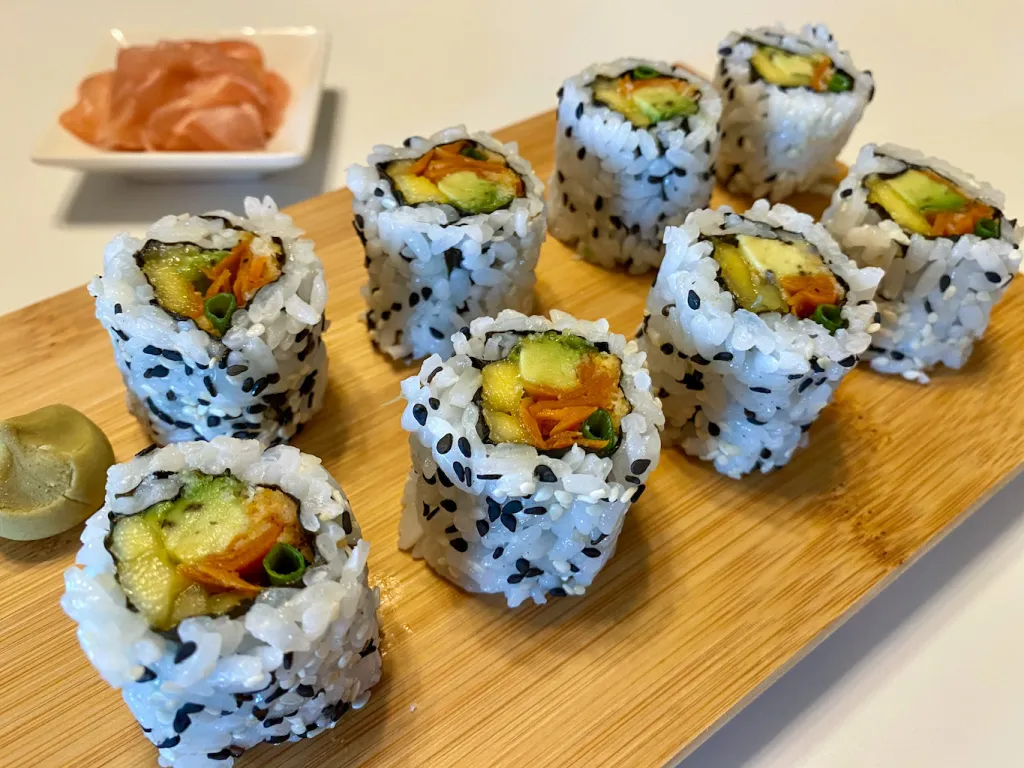
Uramaki, also known as an inside-out roll, is a type of Maki in which the rice is on the outside and the nori is on the inside, surrounding the fillings.
Uramaki is often topped with sesame seeds or fish roe for added texture and flavor.
A popular example of Uramaki is the California Roll.
- Main Ingredients: Rice on the outside, nori, and various fillings.
- Best For: Those who prefer rice on the outside.
- Why It’s Great: Combining textures and flavors makes Uramaki exciting and customizable.
5. Temaki

Temaki is a hand-rolled sushi shaped like a cone with nori wrapped around rice, fish, and vegetables.
It’s a casual and fun way to eat sushi, as it’s larger than most other sushi types and is often eaten with the hands.
Temaki is perfect for sushi lovers who enjoy variety and texture.
- Main Ingredients: Rice, nori, fish, and vegetables are cone-shaped.
- Best For: Casual dining and sushi enthusiasts.
- Why It’s Great: The unique cone shape makes it fun and easy to eat with your hands.
6. Futomaki
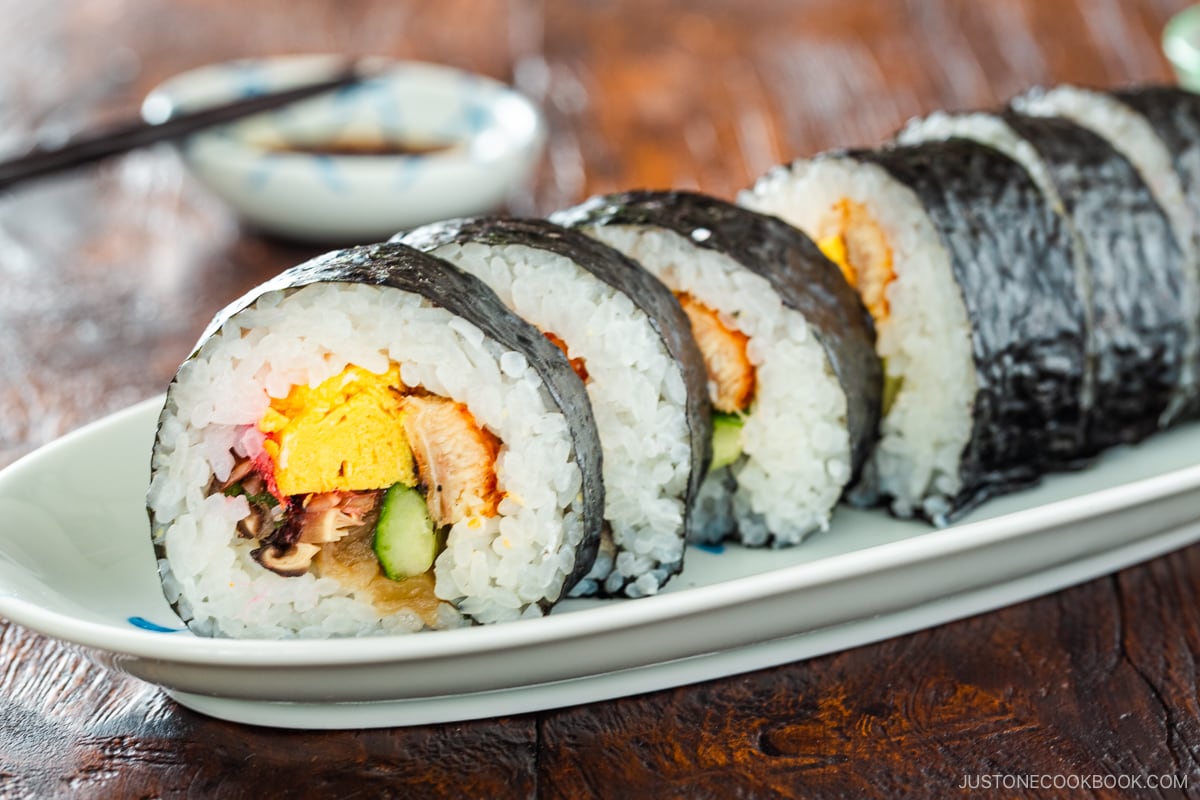
Futomaki is a thick sushi roll that typically includes rice, vegetables, and fish or seafood.
It is wrapped in nori and cut into larger pieces than traditional maki.
Futomaki is known for its vibrant colors and the combination of flavors from the various ingredients.
- Main Ingredients: Rice, nori, fish, and multiple fillings such as vegetables.
- Best For: Those who enjoy sushi with multiple flavors and textures in one bite.
- Why It’s Great: The larger size allows for more ingredients, offering a rich and satisfying experience.
7. Hosomaki
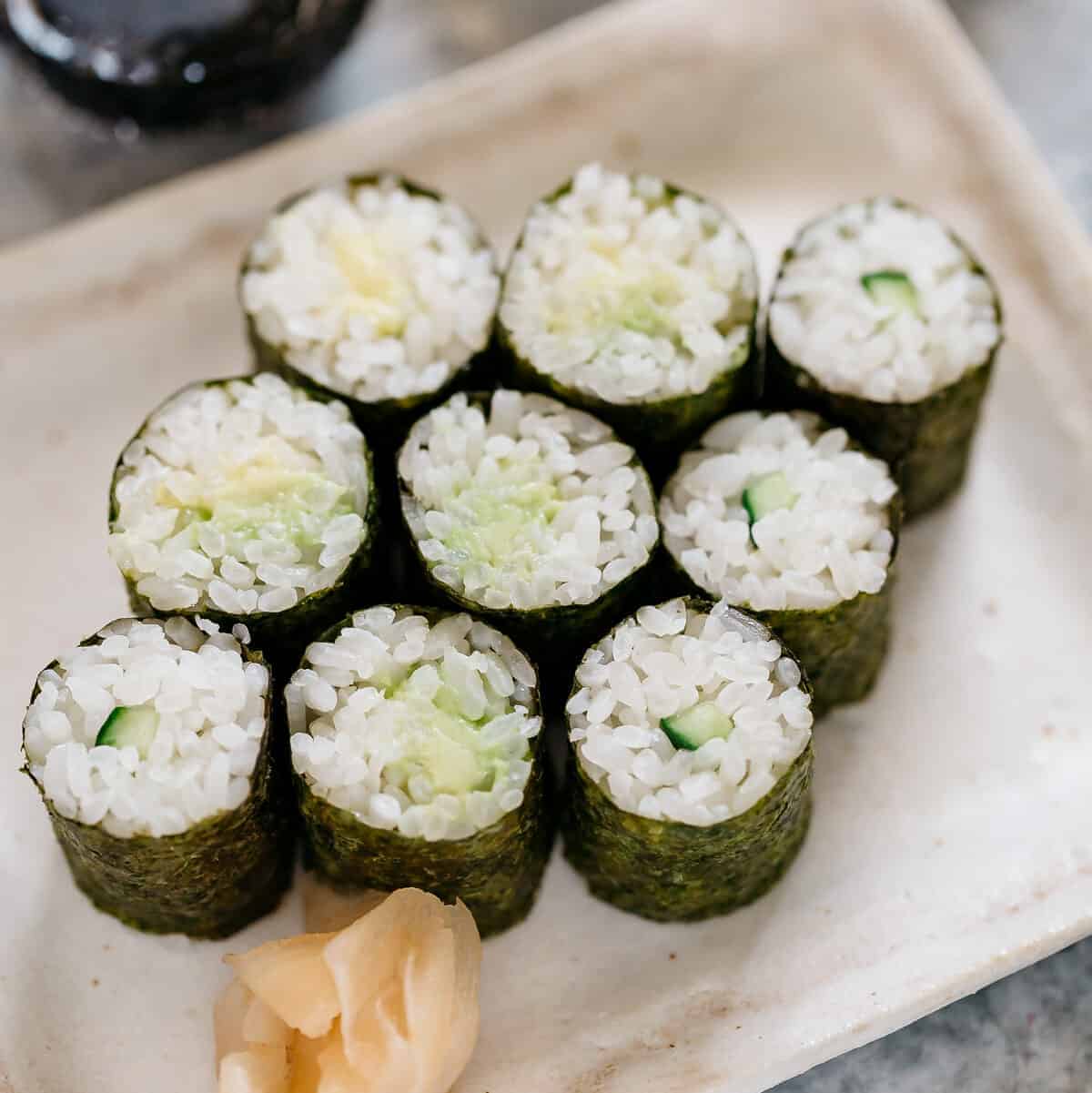
Hosomaki is a small, simple sushi roll with one filling wrapped in rice and nori, usually fish or a vegetable.
It’s smaller in diameter than Futomaki and focuses on a single, clean flavor.
Common fillings for Hosomaki include tuna, cucumber, or avocado.
- Main Ingredients: Rice, nori, and a single filling such as fish or vegetables.
- Best For: Those who prefer minimal, clean flavors in their sushi.
- Why It’s Great: Hosomaki’s simplicity highlights the quality of the ingredients.
8. Chirashi
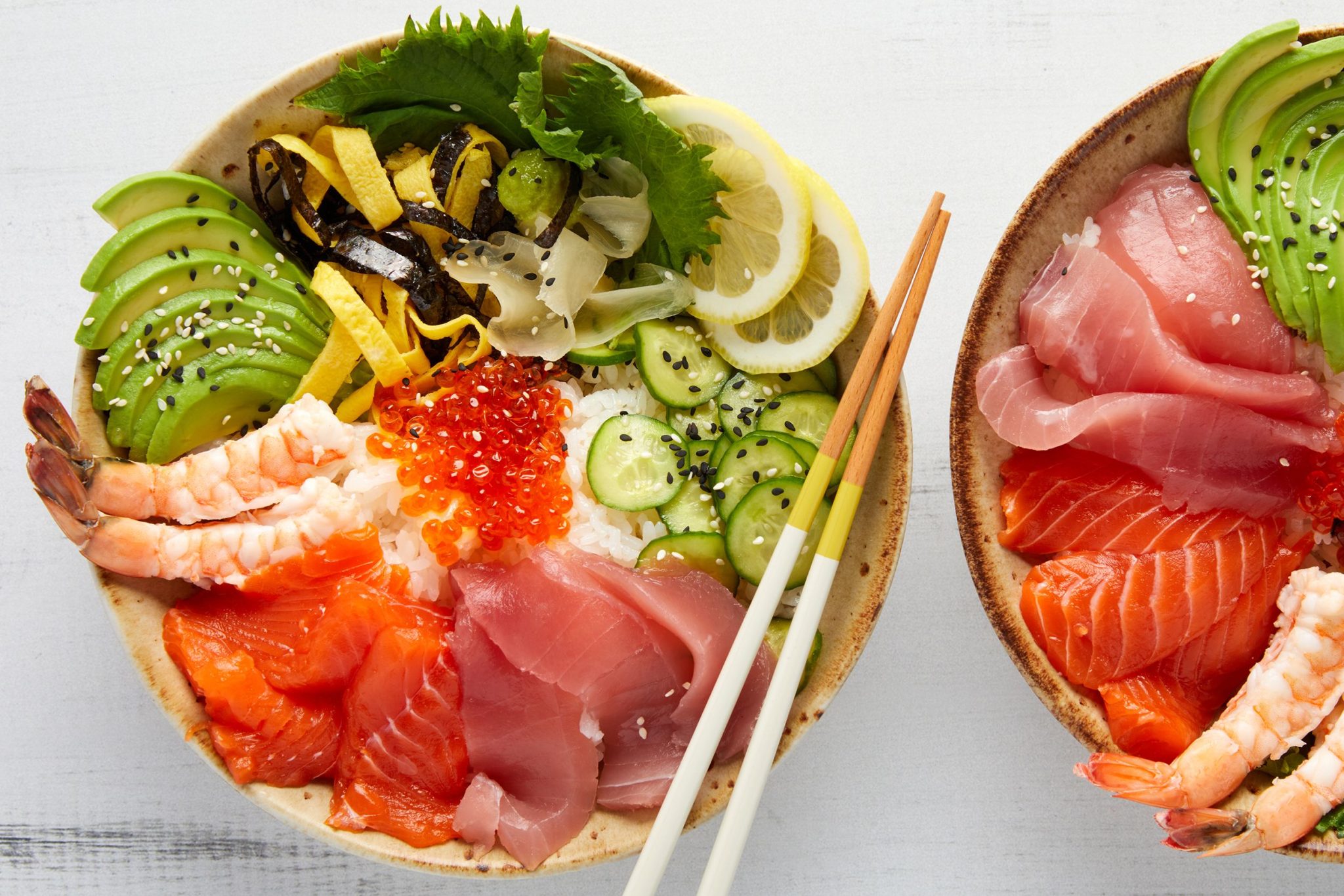
Chirashi, or Chirashizushi, is a type of sushi where vinegared rice is served in a bowl and topped with various raw fish, vegetables, and other toppings.
Unlike traditional sushi, Chirashi is not rolled or shaped.
It’s a colorful, vibrant dish that allows for customization and a mix of flavors in every bite.
- Main Ingredients: Sushi rice topped with raw fish, vegetables, and other ingredients.
- Best For: Those who enjoy variety and a mix of flavors in one dish.
- Why It’s Great: Offers a more relaxed sushi experience with a beautiful presentation of ingredients.
9. Inari
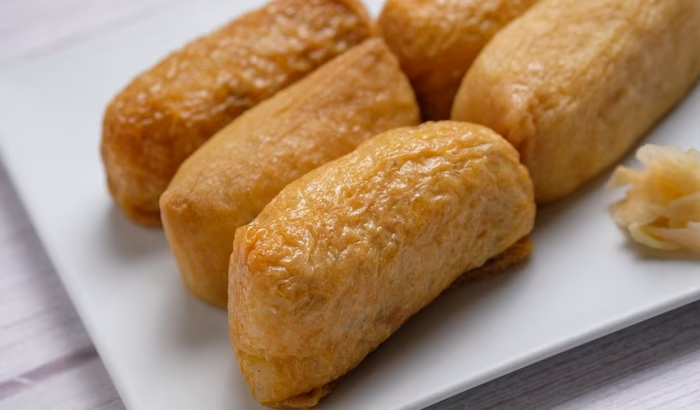
Inari sushi is made by stuffing sushi rice into a pouch of fried tofu.
The tofu is usually marinated in a sweet soy sauce, giving the sushi a soft, slightly sweet flavor.
Inari sushi is vegetarian and doesn’t contain raw fish, making it a popular choice for those who prefer a milder sushi.
- Main Ingredients: Sushi rice and fried tofu pouches.
- Best For: Vegetarians or those looking for a sweet, mild sushi option.
- Why It’s Great: A unique and flavorful sushi perfect for those who don’t eat raw fish.
10. Ebi (Shrimp) Sushi
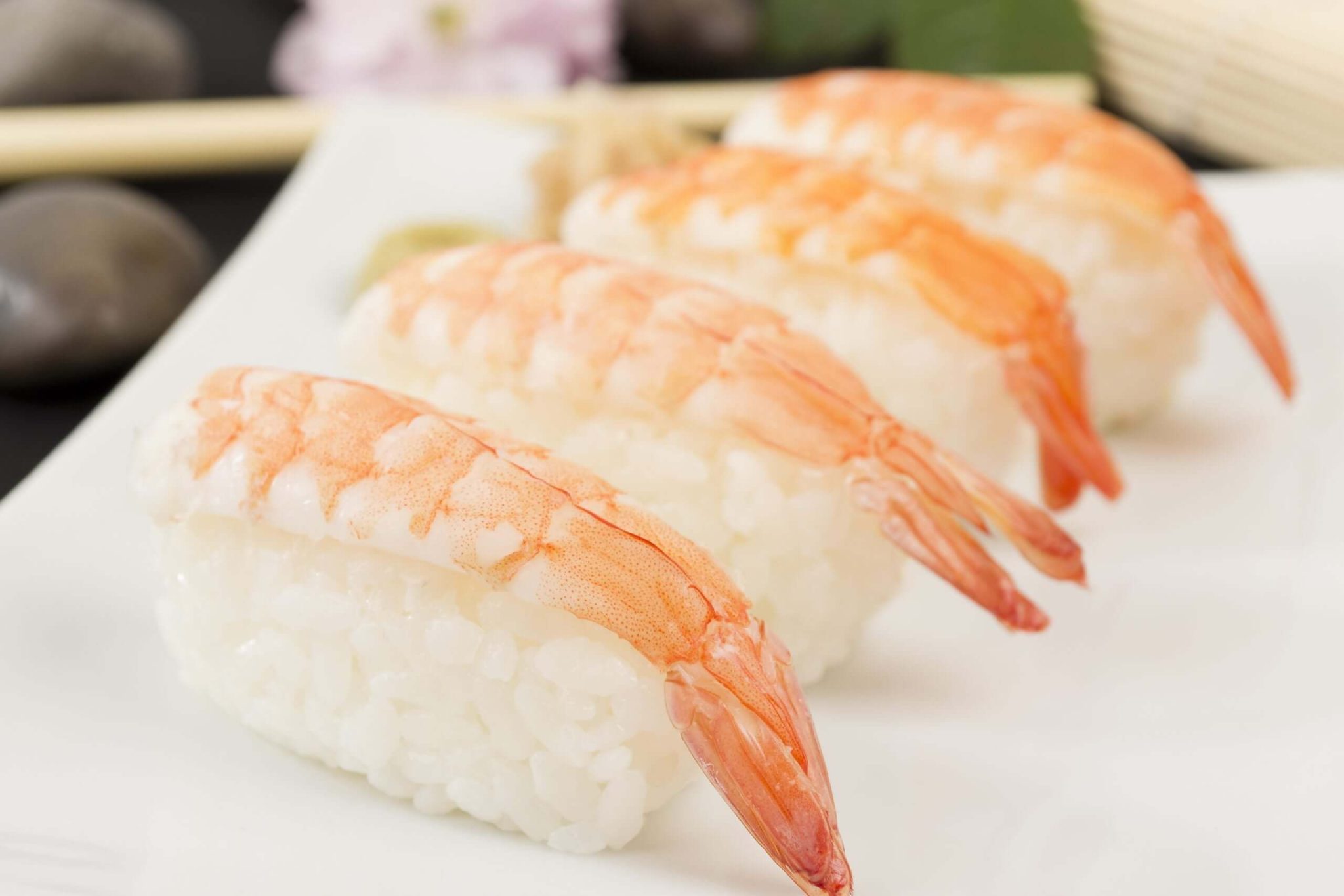
Ebi Sushi features cooked shrimp placed over a small mound of vinegared rice, often with a dab of wasabi in between.
The shrimp is typically boiled or steamed and then butterflied, creating a fresh, slightly sweet flavor.
Ebi sushi is popular among those who prefer cooked seafood in their sushi.
- Main Ingredients: Cooked shrimp and sushi rice.
- Best For: Those who prefer cooked seafood over raw fish.
- Why It’s Great: The mild sweetness of the shrimp makes it a light and refreshing sushi option.
11. Unagi (Eel) Sushi
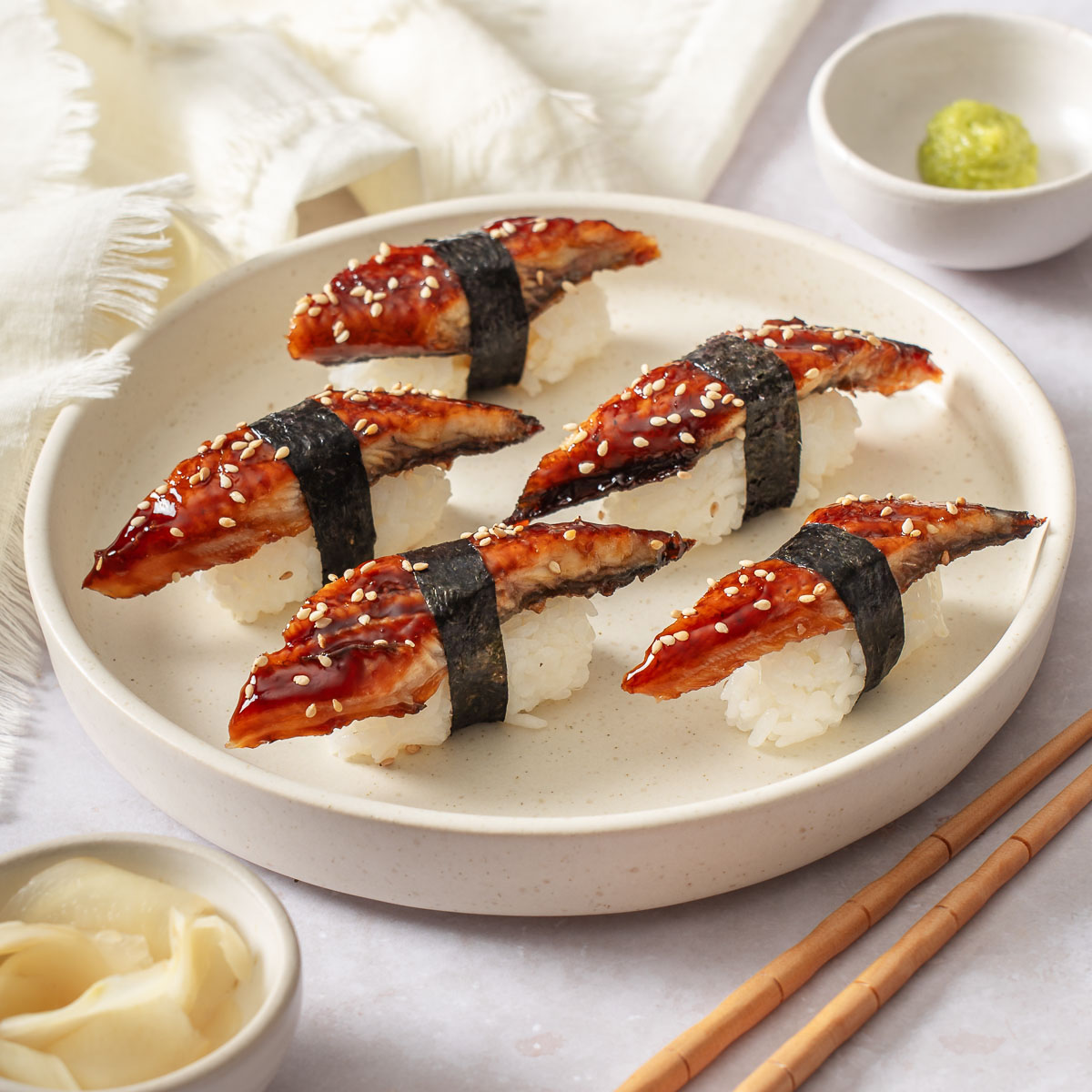
Unagi Sushi features grilled freshwater eel, typically brushed with a sweet soy-based sauce, on top of a mound of sushi rice.
The tender and flavorful eel offers a rich, savory taste that’s slightly sweet from the sauce.
Unagi sushi is popular for those who enjoy cooked, flavorful sushi options.
- Main Ingredients: Grilled eel and sushi rice, often with a sweet soy glaze.
- Best For Fans of cooked sushi with bold, savory flavors.
- Why It’s Great: The rich, sweet-salty flavor of the eel makes it a standout sushi option.
12. Tuna Roll

The Tuna Roll is one of the most common sushi rolls. It features fresh tuna wrapped in rice and nori.
It’s a simple, clean-tasting sushi option that highlights the tuna’s flavor without overwhelming it with other ingredients.
Tuna rolls can be made with raw or cooked tuna, depending on preference.
- Main Ingredients: Tuna, sushi rice, and nori.
- Best For: Those who love the fresh, clean taste of tuna.
- Why It’s Great: Simple yet delicious, the tuna roll is perfect for sushi lovers looking for a classic option.
13. Tamago (Egg) Sushi
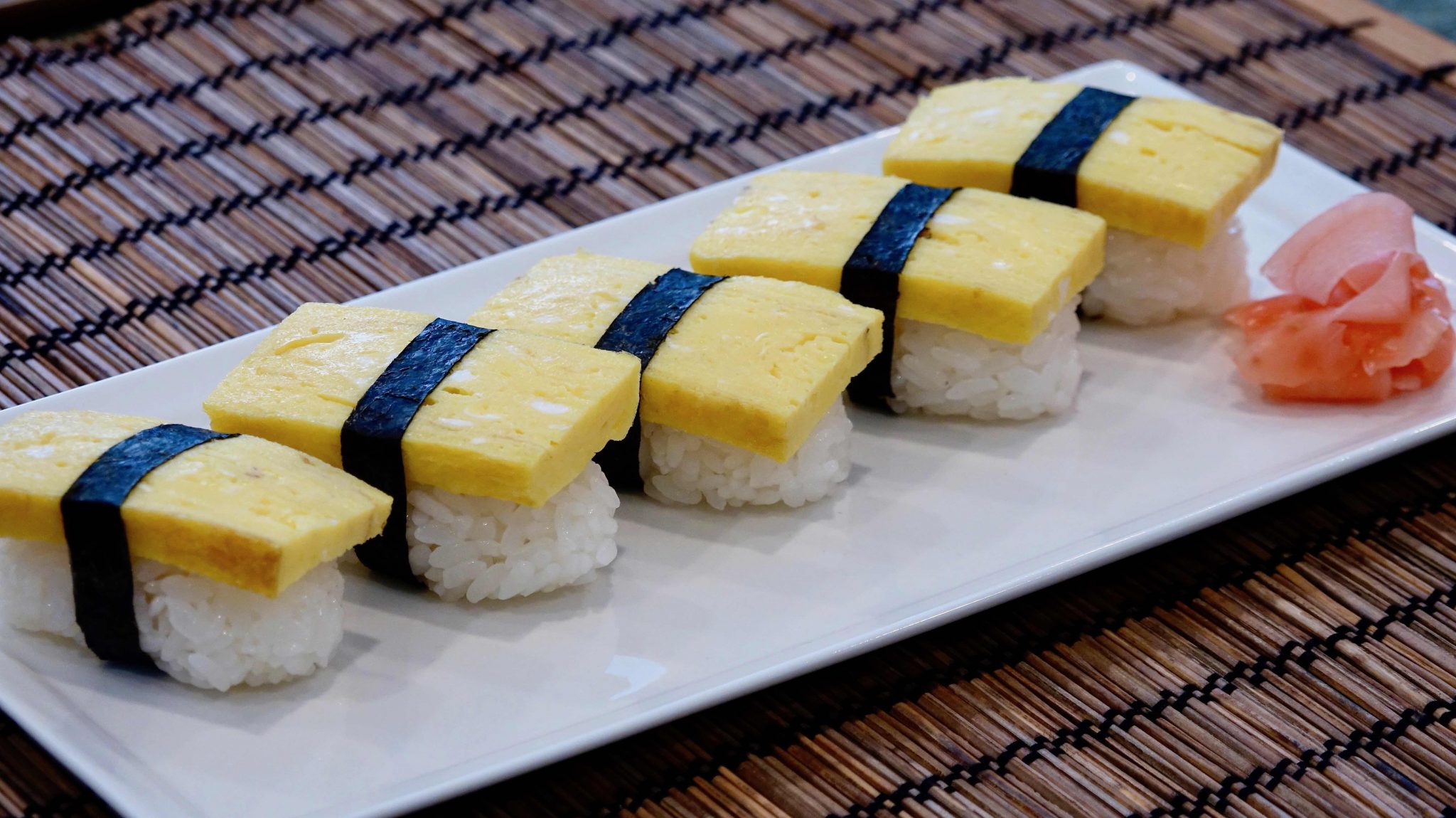
The omelet is seasoned with sugar and soy sauce, giving it a mild sweetness that contrasts with the vinegared rice.
It’s popular for those who enjoy a sweeter sushi option without fish.
- Main Ingredients: Sweet egg omelet and sushi rice.
- Best For: Those who prefer sushi without fish or enjoy sweeter flavors.
- Why It’s Great: The egg’s sweet, fluffy texture makes it a unique and delightful sushi option.
Exploring the World of Sushi: A Guide to Popular Types
Sushi is more than just raw fish and rice—it’s a culinary art form with a rich history and various flavors and styles.
Each type of sushi offers a unique experience, from traditional Nigiri to modern Uramaki.
Whether you’re a sushi enthusiast or new to the world of sushi, understanding the different types can enhance your dining experience.
Let’s explore the different sushi categories and why they’re worth trying.
1. Traditional Sushi for Purists
If you enjoy the authentic flavors of Japanese sushi, these traditional options will likely be your favorites.
They emphasize simple ingredients and focus on the freshness of the fish.
- Nigiri: A perfect balance of rice and fish, highlighting the purity of each ingredient.
- Sashimi: For those who want to experience the unadulterated taste of fresh, raw fish.
- Chirashi: A bowl of vinegared rice topped with a colorful array of sashimi, offering variety in every bite.
2. Rolled Sushi for Fun and Flavor
Rolled sushi, or Maki, offers endless possibilities for fillings and textures.
It is popular among sushi newcomers and those who love creative combinations.
- Maki: A rolled sushi with nori on the outside and various fillings inside.
- Uramaki: Inside-out rolls with rice on the outside, offering extra texture from sesame seeds or fish roe.
- Futomaki: Thick rolls with multiple ingredients, perfect for those who want a flavorful bite.
- Hosomaki: A smaller, more minimalist roll with a single filling for a clean and simple taste.
3. Hand-rolled and Casual Sushi
If you like a more relaxed and casual approach to eating sushi, hand-rolled types like Temaki offer a fun way to enjoy your meal.
These larger sushi cones are designed to be eaten with your hands.
- Temaki: It is hand-rolled into a cone shape and filled with rice, vegetables, and fish, making it an easy, handheld snack.
4. Cooked Sushi for Those Who Prefer It
Not everyone enjoys raw fish, and that’s where cooked sushi varieties come in.
These options offer rich, savory flavors without raw seafood.
- Unagi Sushi: Grilled eel with a sweet soy glaze for a flavorful bite.
- Ebi (Shrimp) Sushi: A light and refreshing cooked shrimp sushi for those who prefer cooked seafood.
- Tamago (Egg) Sushi: This sweet, layered omelet is served on sushi rice, perfect for those who enjoy a sweeter sushi option.
Conclusion
From the traditional Nigiri to the flavorful Unagi Sushi, the world of sushi offers an incredible variety of flavors, textures, and experiences.
Whether you’re a sushi purist or enjoy more modern takes on this Japanese delicacy, these 13 popular sushi types provide a comprehensive guide to the must-try options.
Next time you’re at a sushi restaurant, explore these different types and discover your new favorite.
